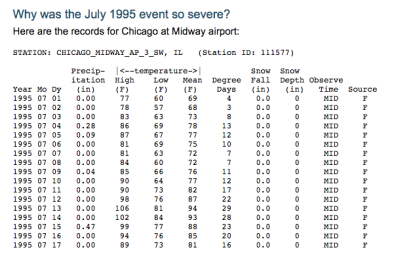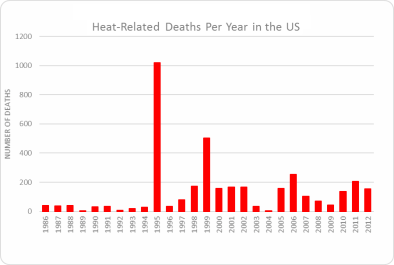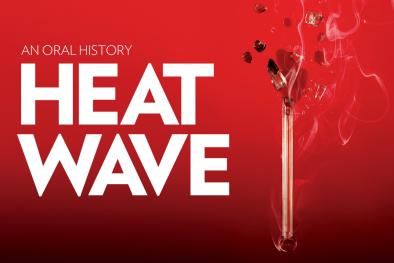Science Source
The July 1995 Heat Wave in the Midwest: A Climatic Perspective and Critical Weather Factors
- States the most notable feature of the great Chicago heat wave of 1995 was the development of very high dewpoint temperature (Td) over the southern Great Lakes region and the Upper Mississippi River Basin—at many locations, hourly values of Td set new records
- States the combination of high air and dewpoint temperatures resulted in daily average apparent temperatures exceeding 36°C over a large area on some days
- Show—using a comparison with past heat waves—that this was the most intense short-duration heat wave in at least the last 48 years at some locations in the southern Great Lakes region and Upper Mississippi River Basin
- Analyses historical data for Chicago, where the majority of fatalities occurred, and finds the intensity of the Chicago heat wave was exceeded only by a few periods in the 1910s and 1930s
- Finds the impacts in the Chicago urban center were exacerbated by an urban heat island that raised nocturnal temperatures by more than 2°C
- Analyses radiosonde data which indicates that maximum daytime boundary layer mixing depths were only a few hundred meters in the core region of the heat wave
- Finds that simulations strongly suggest that the boundary layer mixing depths contributed to the very high values of Td since soil moisture in the central United States was near to above average and evapotransporation was likely high, causing a rapid moistening of the shallow boundary layer
Related Content
Headline

Apr 1, 2016 | Illinois State Climatologist Office, Illinois State Water Survey, U of I
The 1995 Heat Wave in Chicago
Headline

Apr 1, 2016 | Illinois State Climatologist Office
Heat-Related Deaths in the US
Science Source
| Annals of Internal Medicine
Near-Fatal Heat Stroke during the 1995 Heat Wave in Chicago
Jane E. Dematte, Karen O'Mara, Jennifer Buescher et al
Headline

Apr 1, 2016 | Chicago Magazine
How 739 People Died in a Chicago Heat Wave


